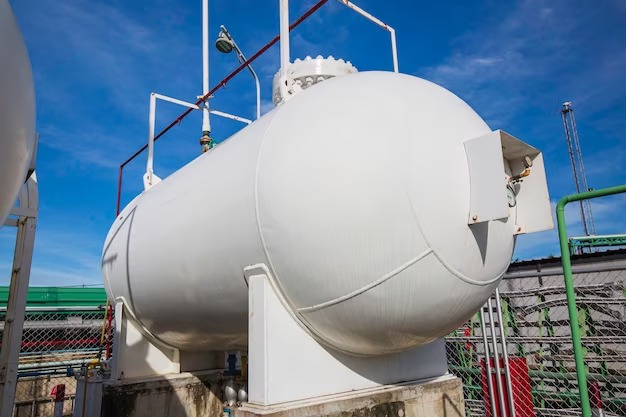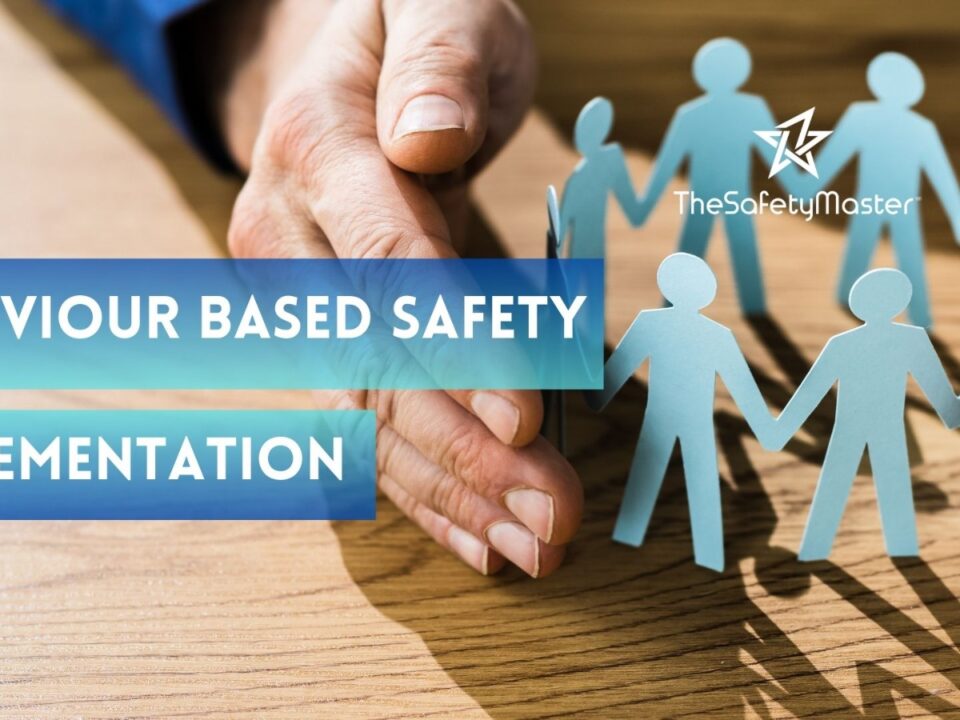Understanding Hazardous Area Classification for Gas Filling Plants in India: Ensuring Safety Compliance to Protect Workers and the Environment

Mitigating Operational Risks in India’s Process Industries: The Power of Quantitative Risk Analysis
October 7, 2023
The Science Behind Behaviour Based Safety: Understanding Human Behavior to Improve Workplace Safety
October 9, 2023In this article, we delve into a critical aspect of gas filling plants in India – understanding hazardous area classification. As workers and environmental protection take center stage, safety compliance becomes imperative. Join us as we uncover the challenges and nuances of this classification, shedding light on the potential risks in gas-filling plants. Through a formal lens, we aim to equip you with a comprehensive understanding of the subject matter, ensuring that you can confidently navigate the complexities and contribute to a safer working environment for all. Discover the key insights and promised guidance that await you in the following sections.
Introduction
With the rapid growth of industries such as gas-filling plants in India, it becomes crucial to prioritize safety and protect both workers and the environment. One key aspect of ensuring a safe working environment is understanding hazardous area classification. In this comprehensive article, we will delve into the intricacies of hazardous area classification for gas filling plants in India, shedding light on its importance and how it can be effectively implemented. As we explore the aspects of hazardous area classification, we will uncover the legal requirements, factors considered in classification, different zones and classes involved, safety measures and equipment necessary for these areas, as well as employee training procedures. Additionally, we will highlight the significance of regular inspections and audits to ensure compliance
Understanding Hazardous Area Classification
Understanding Hazardous Area Classification: Within the context of gas filling plants in India, a thorough understanding of hazardous area classification is paramount to ensuring safety compliance and protecting workers as well as the environment. Hazardous area classification involves identifying and categorizing areas where flammable gases, vapors, or combustible dusts may be present, and assessing the potential risks associated with them. This crucial process allows for the implementation of appropriate safety measures and helps prevent accidents or catastrophic incidents.
Hazardous area classification takes into account various factors including the types of substances handled in gas filling plants, their properties, release rates, ventilation systems, ignition sources, and surrounding conditions. By carefully analyzing these elements, experts can determine different zones and classes within a facility based on the likelihood and extent of a potential hazard. This classification system provides valuable guidance for designing safe workspaces, selecting suitable electrical equipment, implementing preventive measures such as grounding or explosion-proof enclosures, and establishing emergency response protocols.
Having a comprehensive grasp of hazardous area classification not only fosters a culture of safety but also enhances operational efficiency. It enables gas-filling plant operators to optimize their processes while minimizing risks associated with potentially explosive atmospheres. By prioritizing safety through proper hazardous area classification practices, businesses can demonstrate their commitment to employee welfare and environmental protection – ultimately contributing to a thriving industry that safeguards both human lives and our planet’s well-being.
Importance of Hazardous Area Classification in Gas Filling Plants
The significance of hazardous area classification in gas-filling plants cannot be overstated. It serves as a crucial foundation for ensuring the safety of workers and protecting the environment. By accurately determining the zones and classes within a plant, potential hazards can be identified, controlled, and mitigated effectively. This classification helps in implementing appropriate safety measures and equipment, reducing the risk of accidents, fires, and explosions. Hazardous area classification plays a pivotal role in creating a robust safety culture within gas-filling plants. It raises awareness among employees about the potential dangers they may encounter during their work and empowers them to take necessary precautions. Moreover, it facilitates effective emergency planning by identifying areas where ignition sources may be present or where flammable gases could accumulate.
Compliance with hazardous area classification not only safeguards human lives but also ensures environmental protection. By delineating hazardous zones accurately, companies can prevent leakage or release of dangerous substances into the surroundings. This proactive approach demonstrates a commitment to sustainability and responsible business practices.
Overall, understanding the importance of hazardous area classification instills confidence that gas filling plants in India are dedicated to employee welfare and environmental preservation. Embracing this crucial aspect promotes safer operations while fostering a positive image for the industry as a whole.
The Legal Framework for Hazardous Area Classification in India
The Legal Framework for Hazardous Area Classification in India: In India, the legal framework governing hazardous area classification in gas-filling plants is established by a combination of national and state regulations. At the national level, the Petroleum and Explosives Safety Organization (PESO) plays a pivotal role in ensuring compliance with safety standards. PESO has developed a comprehensive set of guidelines and codes that outline the requirements for hazardous area classification.
These guidelines are further complemented by state-specific legislation, which may vary slightly based on regional considerations. The overarching aim of these regulations is to ensure the safety of workers and protect the environment from potential hazards associated with gas-filling plants. The legal framework sets forth strict guidelines for identifying hazardous areas, determining their classification, and implementing appropriate safety measures.
By adhering to this legal framework, gas-filling plants can not only safeguard their employees but also contribute to building a safer industrial landscape in India. Compliance with these regulations ensures that potential risks are mitigated effectively, enhancing overall operational efficiency while bolstering trust among stakeholders. It is through this collective commitment to safety that India’s gas-filling industry can thrive while maintaining its dedication to worker welfare and environmental sustainability.
Factors Considered in Hazardous Area Classification
Factors Considered in Hazardous Area Classification: In the complex process of hazardous area classification for gas filling plants, several crucial factors are taken into account to ensure accurate categorization and subsequent safety measures. These factors revolve around the specific properties of the gases handled, potential ignition sources, and the surrounding environment.
One primary factor is the flammability characteristics of the gases involved. This includes parameters such as flash point, auto ignition temperature, and lower explosive limit (LEL). Each gas has unique properties that contribute to its classification within designated zones.
Another important consideration is ventilation and airflow patterns within the plant. Proper circulation helps disperse any released gases effectively, reducing the risk of accumulation or concentration in certain areas. Understanding these patterns aids in determining zone boundaries and potential hazardous areas.
Furthermore, potential sources of ignition must be carefully evaluated. Electrical equipment, heating elements, sparks from mechanical operations, and static electricity can all ignite flammable substances. Identifying these sources allows for appropriate measures like installing explosion-proof equipment or implementing grounding systems.
By addressing these factors comprehensively during hazardous area classification processes for gas-filling plants, we can establish a safe working environment that protects workers while ensuring environmental sustainability. Understanding these intricacies allows for effective safety strategies to be implemented seamlessly into plant operations.
Different Zones and Classes in Hazardous Area Classification
In hazardous area classification for gas filling plants, different zones and classes are established to categorize the level of potential hazards present in specific areas. These zones and classes aid in determining the appropriate safety measures needed to mitigate risks effectively. One of the key aspects is the division into three main zones: Zone 0, Zone 1, and Zone 2. Zone 0 represents areas where explosive gases are continuously or frequently present, posing a high risk. On the other hand, Zone 1 comprises areas where explosive gases may occasionally be present under normal operating conditions. Finally, Zone 2 includes areas where explosive gases are unlikely to be present or only for short periods.
Furthermore, hazardous area classification also considers various classes based on the nature of flammable substances present. These classes range from Class I (gaseous substances) to Class IV (flammable dusts). Each class has its own unique requirements for safety equipment and measures.
Understanding these different zones and classes is crucial as it allows gas-filling plants to tailor their safety protocols accordingly. By accurately classifying hazardous areas, necessary precautions can be taken to ensure worker safety and safeguard the environment from potential accidents or disasters caused by ignition sources.
Safety Measures and Equipment for Hazardous Areas in Gas Filling Plants
Gas filling plants in India pose unique safety challenges due to the presence of hazardous areas. To ensure the well-being of workers and protect the environment, it is crucial to implement appropriate safety measures and employ suitable equipment within these hazardous areas. One vital safety measure is the installation of explosion-proof electrical equipment. These specialized devices are designed to prevent ignition sources, such as sparks or excessive heat, from reaching flammable substances. They have robust housing and are constructed with materials that can withstand potential explosions or chemical reactions.
Additionally, gas-filling plants must have effective ventilation systems in place. Proper ventilation helps control the accumulation of flammable gases or vapors by continuously replacing them with fresh air. This not only reduces the risk of explosions but also improves air quality for workers, promoting a healthier working environment.
Furthermore, having reliable fire suppression systems is paramount for hazard mitigation. Automatic sprinklers, foam-based extinguishing systems, or gas suppression systems are commonly employed to quickly detect and suppress fires in case of an emergency. Regular maintenance and testing ensure their functionality when needed most.
By implementing these safety measures and utilizing appropriate equipment within hazardous areas, gas-filling plants in India can enhance worker safety while mitigating potential risks. Adhering to strict guidelines ensures compliance with regulations while fostering a secure environment for all involved parties within the gas industry ecosystem.
Employee Training and Safety Procedures
In order to ensure the utmost safety of workers and minimize potential hazards, thorough employee training and implementation of appropriate safety procedures are vital in gas-filling plants. By equipping employees with the necessary knowledge and skills, they become better equipped to identify potential risks and respond accordingly. Training programs should cover a range of topics including hazard recognition, emergency response protocols, proper handling of hazardous substances, and the use of personal protective equipment. Additionally, regular drills and simulations can enhance preparedness and allow employees to practice their response strategies in a controlled environment. By fostering a culture of safety awareness through ongoing training initiatives, employees become actively engaged in maintaining a secure work environment.
Implementing comprehensive safety procedures is equally important. These procedures should include guidelines on operating machinery, handling hazardous materials safely, conducting routine inspections, and reporting any anomalies promptly. Regular maintenance checks on equipment should also be carried out to prevent malfunctions or leaks that may lead to accidents or production disruptions.
By prioritizing employee training and robust safety procedures, gas-filling plants can create an environment where workers feel confident in their ability to mitigate risks effectively. Ultimately, this fosters a sense of security among employees while promoting an optimistic outlook for improved workplace safety standards within the industry.
Regular Inspections and Audits for Compliance
Regular Inspections and Audits for Compliance: In order to ensure the ongoing safety and compliance of gas filling plants, regular inspections and audits are essential. These inspections involve a thorough examination of the plant’s infrastructure, equipment, and operating procedures. Trained inspectors meticulously assess various factors such as electrical installations, ventilation systems, fire protection measures, and proper handling of hazardous substances.
These inspections not only identify potential hazards but also serve as an opportunity to rectify any shortcomings or deficiencies in the plant’s safety protocols. Through continuous monitoring, audits help maintain a proactive approach toward safety compliance. Furthermore, by engaging in regular inspections and audits, gas-filling plants demonstrate their commitment to safeguarding the well-being of their employees and protecting the surrounding environment.
An optimistic spin on this is that regular inspections and audits provide an invaluable opportunity for gas-filling plants to continually improve their safety standards. By identifying areas for enhancement through these evaluations, plants can take proactive measures to mitigate risks effectively. This commitment not only fosters a culture of safety within the organization but also establishes trust with stakeholders by showcasing dedication toward environmental conservation. Ultimately, these efforts contribute to creating a safer work environment for employees while promoting sustainable practices within the industry as a whole.
Consequences of Non-Compliance with Hazardous Area Classification
The repercussions of non-compliance with hazardous area classification in gas filling plants can be catastrophic, posing significant risks to both the workers and the surrounding environment. Neglecting proper classification can lead to devastating accidents, such as explosions or fires, which may result in severe injuries or even fatalities. The consequences extend beyond human lives, as these incidents can also cause extensive damage to property and infrastructure. In addition to the immediate physical harm caused by non-compliance, there are legal and financial implications that companies should consider. Non-compliance can lead to hefty fines and penalties imposed by regulatory authorities. Moreover, companies may face lawsuits from affected individuals seeking compensation for injuries or damages incurred due to the lack of safety measures. These legal battles can be lengthy and costly, tarnishing a company’s reputation in the process.
However, by prioritizing safety compliance and adhering to proper hazardous area classification protocols, gas-filling plants have an opportunity to demonstrate their commitment to protecting their workers and the environment. Implementing necessary safety measures not only ensures a secure working environment but also fosters trust among employees and stakeholders. By investing in comprehensive training programs, conducting regular inspections, and staying up-to-date with evolving safety standards, gas filling plants can create a culture of safety that ultimately enhances productivity while safeguarding everyone involved.
By embracing safety as an integral part of their operations, gas-filling plants underscore their dedication towards a sustainable future where worker well-being is paramount. Rather than viewing compliance as burdensome regulations, responsible companies embrace it as an opportunity for growth and improvement – ultimately creating safer work environments where employees thrive while contributing positively to society at large.
Environmental Impact of Proper Hazardous Area Classification
The environmental impact of proper hazardous area classification in gas filling plants cannot be overstated. By accurately identifying and classifying hazardous areas, the risk of accidents and subsequent harm to the environment is significantly reduced. Gas leaks or explosions in non-classified areas can lead to the release of harmful gases into the atmosphere, endangering both human health and ecosystems. Moreover, proper hazardous area classification ensures that appropriate safety measures are implemented to contain any potential leaks or spills. This proactive approach not only safeguards workers but also prevents the contamination of soil, water sources, and air. By effectively managing risks through proper classification, gas filling plants contribute to maintaining a clean and sustainable environment for future generations.
Implementing thorough hazard assessment processes further promotes eco-friendly practices. From utilizing high-quality materials for equipment to incorporating advanced technologies in monitoring systems, gas filling plants can minimize their carbon footprint. By embracing innovative solutions that prioritize environmental sustainability alongside safety compliance, these facilities demonstrate their commitment to responsible operations and inspire positive change within the industry.
Conclusion
In the realm of hazardous area classification for gas filling plants in India, ensuring safety compliance is not just a legal obligation but also a moral imperative. By implementing rigorous classification processes and adhering to the prescribed safety measures, we can create an environment where workers are protected and the risk of accidents is minimized. Moreover, this commitment to safety extends beyond human welfare; it also safeguards our precious ecosystem from potential disaster. As we move forward, let us embrace the optimistic belief that every gas filling plant in India can become a symbol of excellence in safety compliance, setting an example for industries worldwide. By prioritizing the wellbeing of workers and the environment, we pave the way for a future where accidents are prevented and harmony between industrial progress and natural preservation is achieved.




